Rosette Emblem Majesty
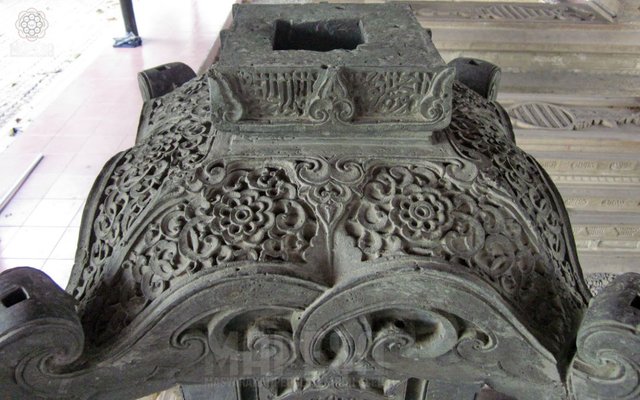
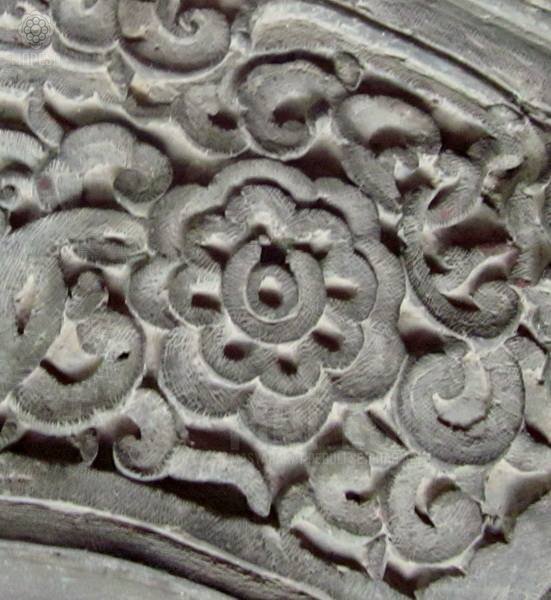
Rosette: decorations on the grave of the late sultan of Aceh Darussalam Sultan 'Alauddin Ri'ayah /' Inayah Shah bin Sultan 'Ali Shah Mughayah. Tombstone made of bronze. (Baitur Rijal/Kandang 12). [1][2]
Rosette (Arabic: al-wuraidah), or ornate roses, a symbol that very often found on buildings and antiquities from the time of the Mamluks (Daulah Al-Mamalik; the 13th century up to the 16th) , Rosette is used, usually, strand six, and sometimes eight strand.
Bani Rasul (Ar-Daulah Rasuliyyah; the 13th century until the 15th AD), which ruled in Yemen to use strand rosette five as a special symbol of their families. This was evidenced by the inconsistent use of rosette-strand five in antiques made in Cairo for a family of Bani Rasul up to half of the 9th century Hijri / 15th AD
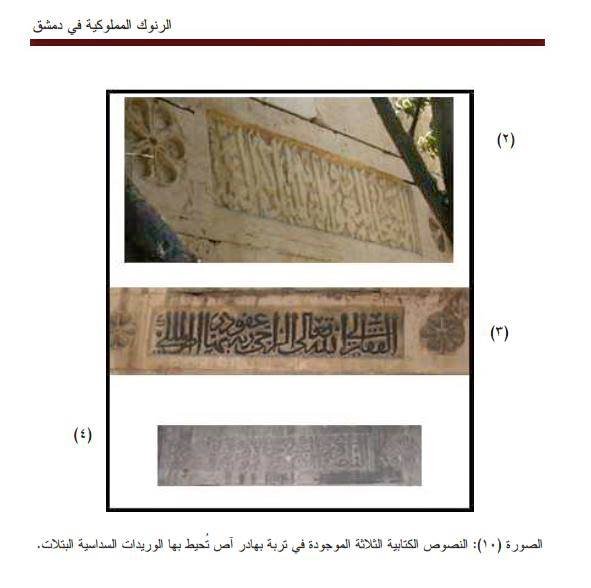
Rosette on the tomb of Emir Al-Manshuri Bahadir (demise 730 AH / 1329 AD) in Damascus. Source: "Ar-Runuk Al-Mamlukiyyah fi Dimashq" [3]
Bani Qalawoon (14th century AD) also used as a symbol of their special rosette. Rosette they use strand six, and is often found in a variety of antique objects made for sultans and emirs of this dynasty.
Use of the rosette by the emirs and high officials indicates the importance of this symbol for the ruling empire. Eg for it is carved rosettes found in the cemetery Amir Bahadir bin 'Abdullah Al-Manshuriy An-Nasir built in Damascus in 721 AH (1321 AD).
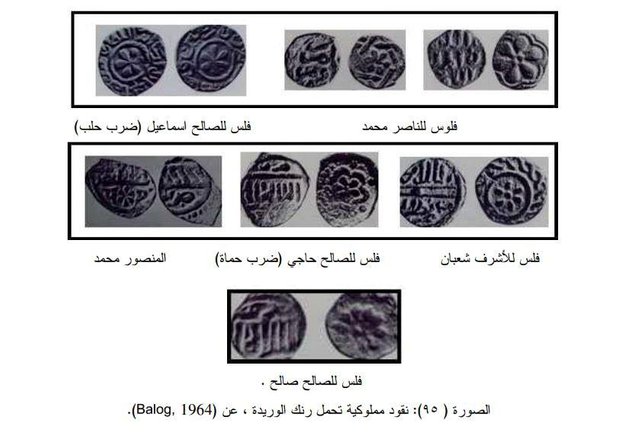
Rosette on the currency of the sultans Mamluks, Egypt. Source: "Ar-Runuk Al-Mamlukiyyah fi Dimashq" [4]
Rosette was also observed in the currency is printed by several sultans Mamluks, among others, the currencies Sultan An-Nasir Muhammad bin Qalawoon and his son, al-Salih Isma'il, as well as on the currency copper printed Al-Ashraf Sha'ban , and the currency and the Al-Mansur Muhammad Salih al-Hajj.
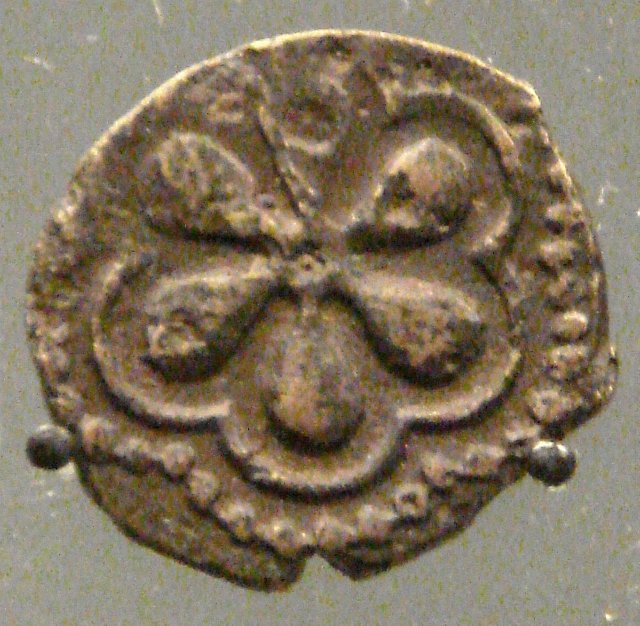
Currency Sultan An-Nasir Muhammad bin Qalawoon (741 H / 1341 AD). [source image 5: en.wikipedia.org]
However, not every rosette is a symbol or emblem of a person or a ruling family. Rosette could have a rosette, and nothing more than that.
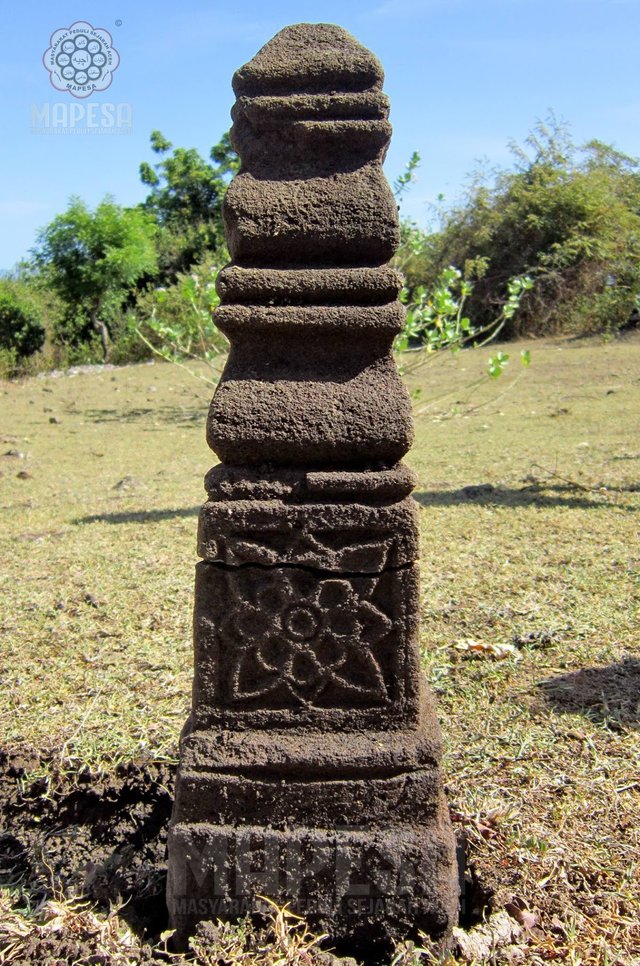
Rosette on one of the graves found in the area historical sites Lamuri, Lamreh, Krueng Raya, Aceh Besar. [6]
In the region of Aceh Besar, rosette appears on some gravestones of half of the 9th century H / 15th M in the historical sites Lamreh, Krueng Raya. Rosette used for decoration on the tombstones of the strand eight, and seems to have been carved specifically for the owner of the tomb.
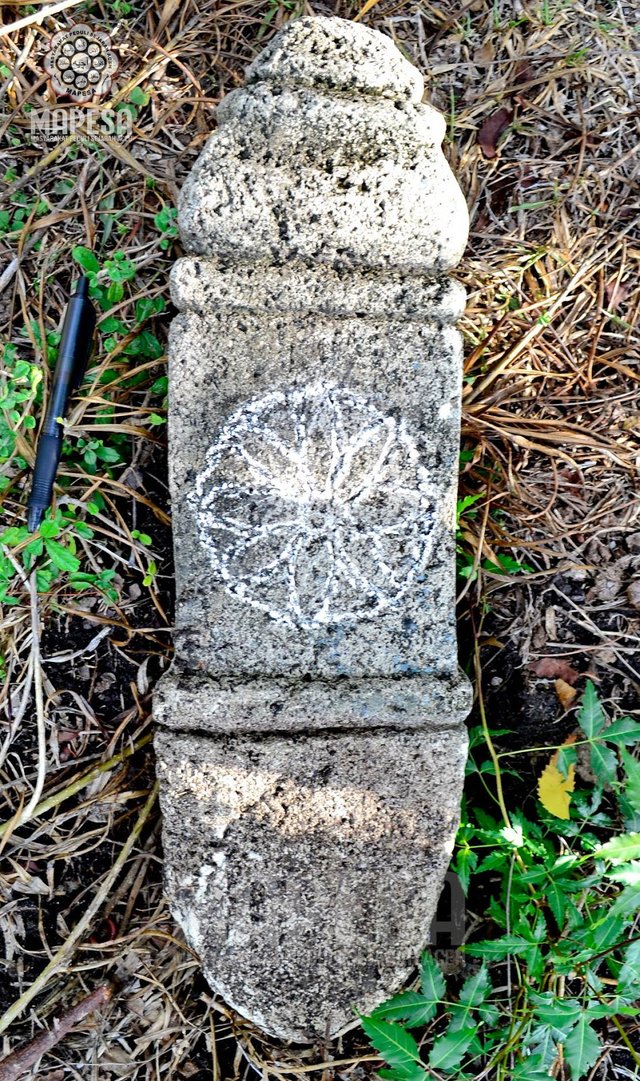
Rosette on one of the graves found in the area historical sites Lamuri, Lamreh, Krueng Raya, Aceh Besar. [7]
In the meantime, two rosette pattern was observed in Lamreh: only, without petal rosette with strands of conifers and flowers placed in a circle panel. Others, rosette of eight petals were placed in a rectangular panel.
Rosette strand eight found on the tombs Aceh Darussalam of the 10th century AH / 16th AD Among others at the tomb of Sultan 'Ala'uddin Ri'ayah Shah bin' Ali Mughayah Shah, and his son, Sultan 'Ali Ri' Shah's father in the cemetery Baittur Rijal/Kandang 12, Banda Aceh.
At the tomb of Sultan 'Ali Shah Ri'ayah, rosette strand eight hewn cut in the panels containing the inscription verses of the Qur'an (Al' Imran: 190-191), which, among other verse inscription which reads:
إِنَّ فِي خَلْقِ السَّمَاوَاتِ وَالْأَرْضِ وَاخْتِلَافِ اللَّيْلِ وَالنَّهَارِ لَآَيَاتٍ لِأُولِي الْأَلْبَابِ * الَّذِينَ يَذْكُرُونَ اللَّهَ قِيَاماً وَقُعُوداًوَعَلَى جُنُوبِهِمْ وَيَتَفَكَّرُونَ فِي خَلْقِ السَّمَاوَاتِ وَالْأَرْضِ رَبَّنَا مَا خَلَقْتَ هَذَا بَاطِلاً سُبْحَانَكَ فَقِنَا عَذَابَ النَّارِ
From here, perhaps, as an initial assumption, it can be argued that the rosette strand eight is one of the decorative Islami which has a special place for families sultanate of Aceh Darussalam in the 10th century AH / 16th AD, as well as for high-level officials country in that time, due to cultural contacts Aceh spacious with central Islamic countries in the Middle East, especially Yemen and Egypt.
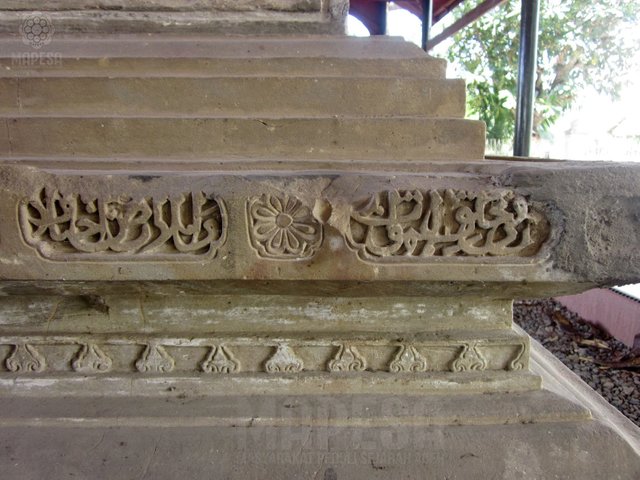
Inscription: [8] إِنَّ فِي خَلْقِ السَّمَاوَاتِ وَالْأَرْضِ وَاخْتِلَافِ
___
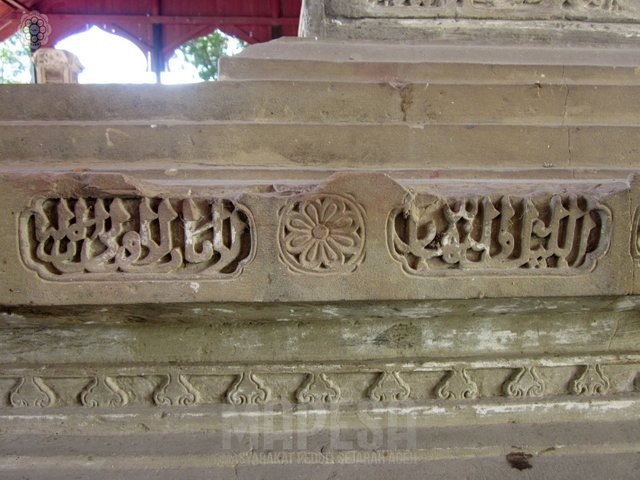
Inscription: [9] اللَّيْلِ وَالنَّهَارِ لَآَيَاتٍ لِأُولِي الْأَلْبَابِ
___
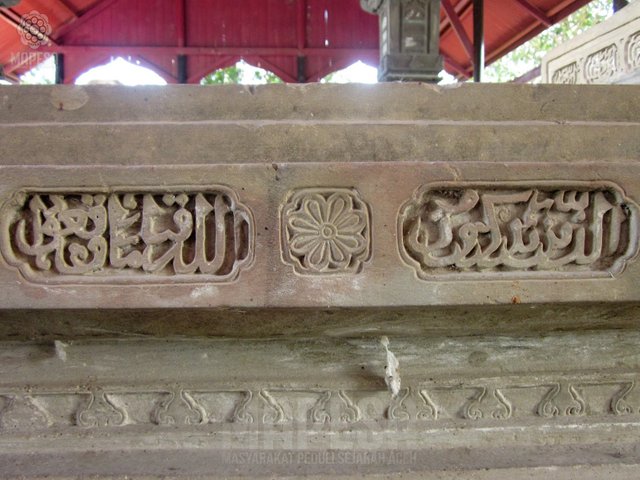
Inscription: [10] الَّذِينَ يَذْكُرُونَ اللَّهَ قِيَاماً وَقُعُوداً
___
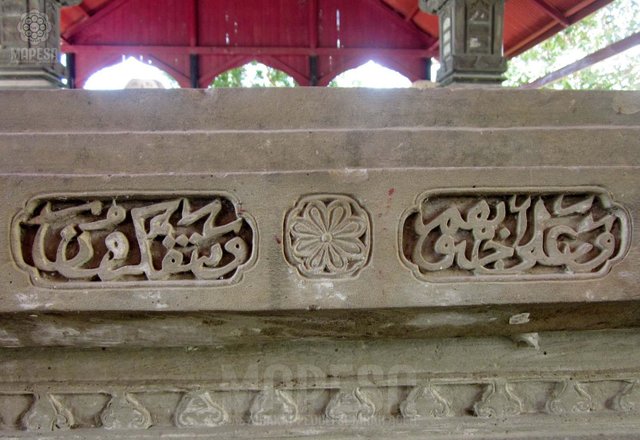
Inscription: [11] وَعَلَى جُنُوبِهِمْ وَيَتَفَكَّرُونَ
___
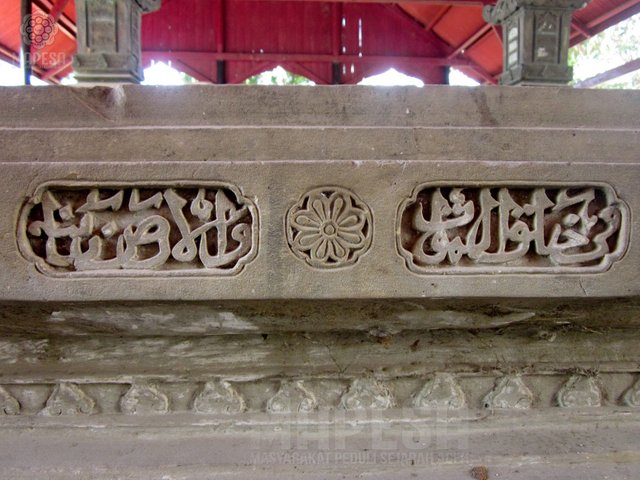
Inscription: [12] فِي خَلْقِ السَّمَاوَاتِ وَالْأَرْضِ رَبَّنَا
___
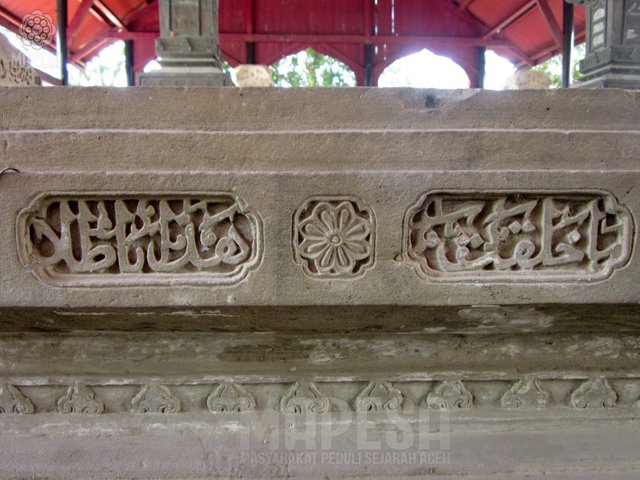
Inscription: [13] مَا خَلَقْتَ هَذَا بَاطِلاً
___

Inscription: [14] سُبْحَانَكَ فَقِنَا عَذَابَ النَّارِ
___
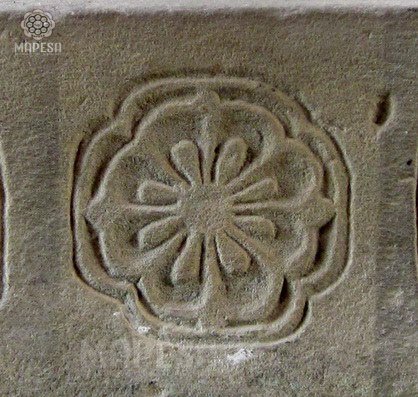
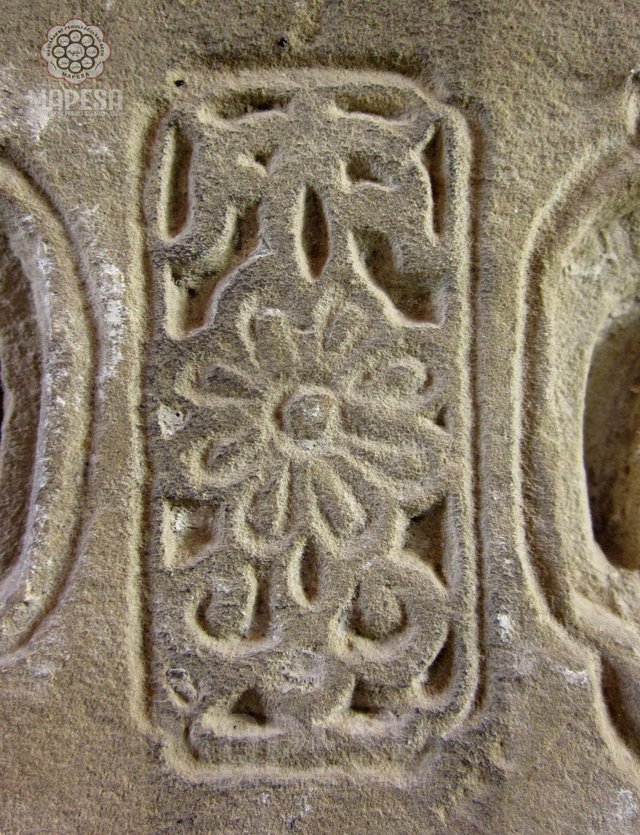
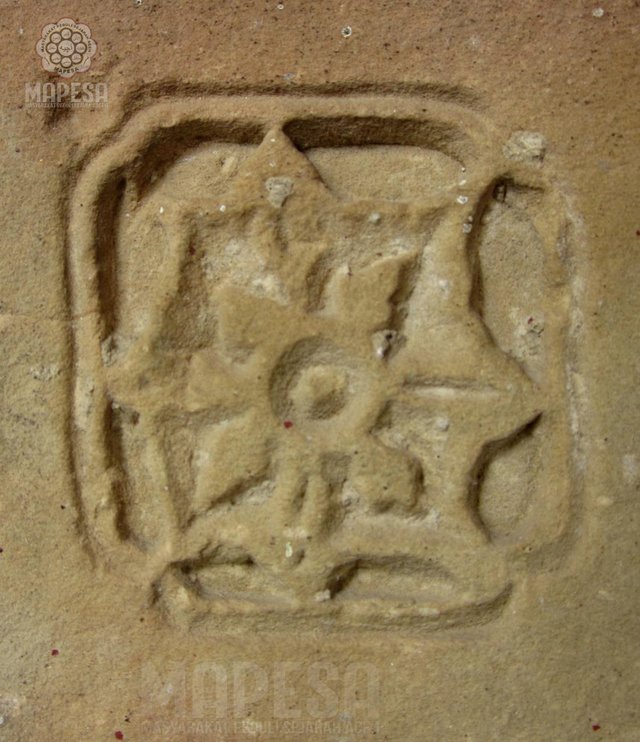
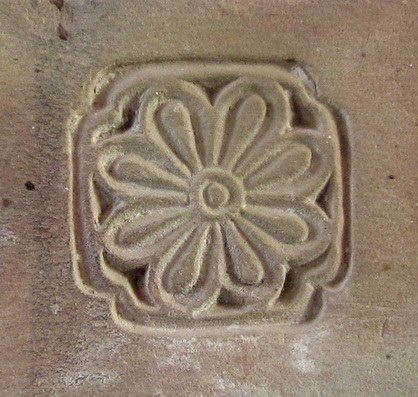
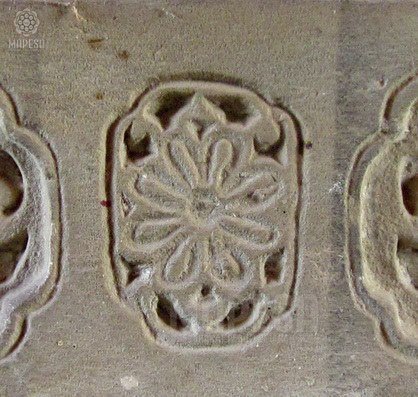
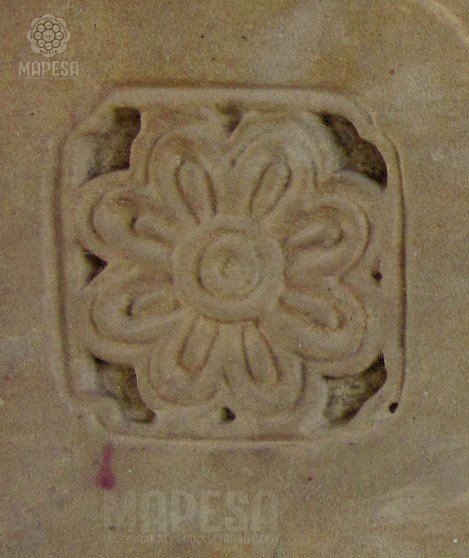
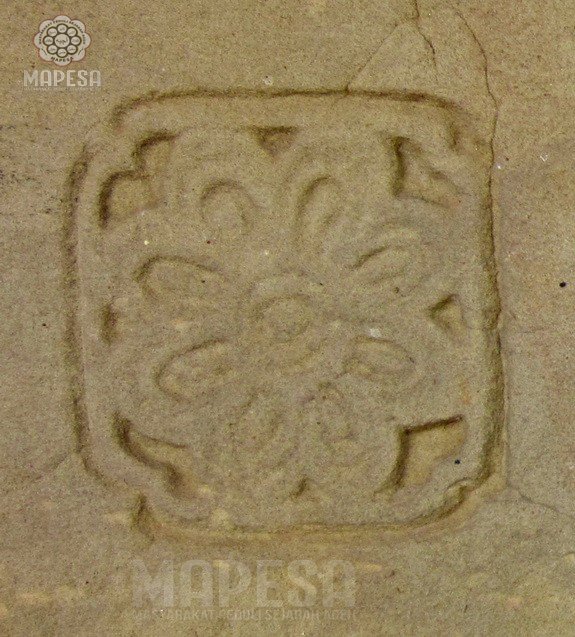
Rosette: decorating the tomb of the Sultan of Aceh. (Baitur Rijal/Kandang 12) [15][16][17][18][19][20][21]
This article translation of our website: mapesaaceh.com
and www.facebook.com/groups/SAHABAT.MAPESA
